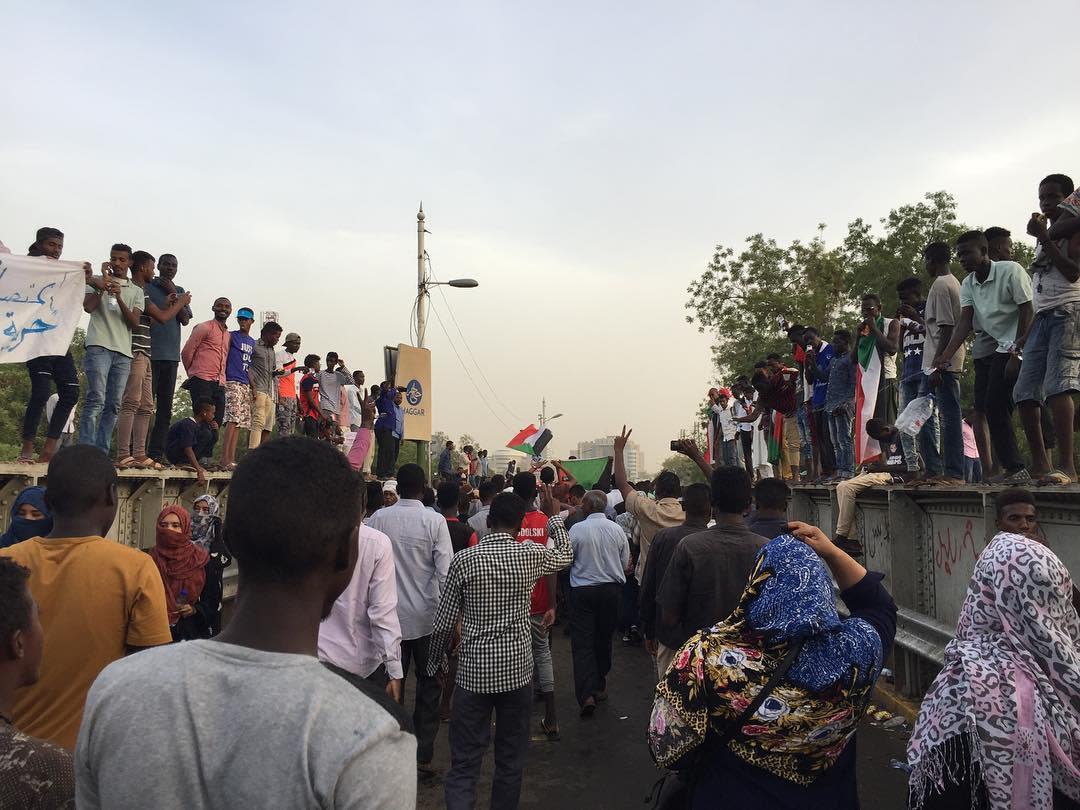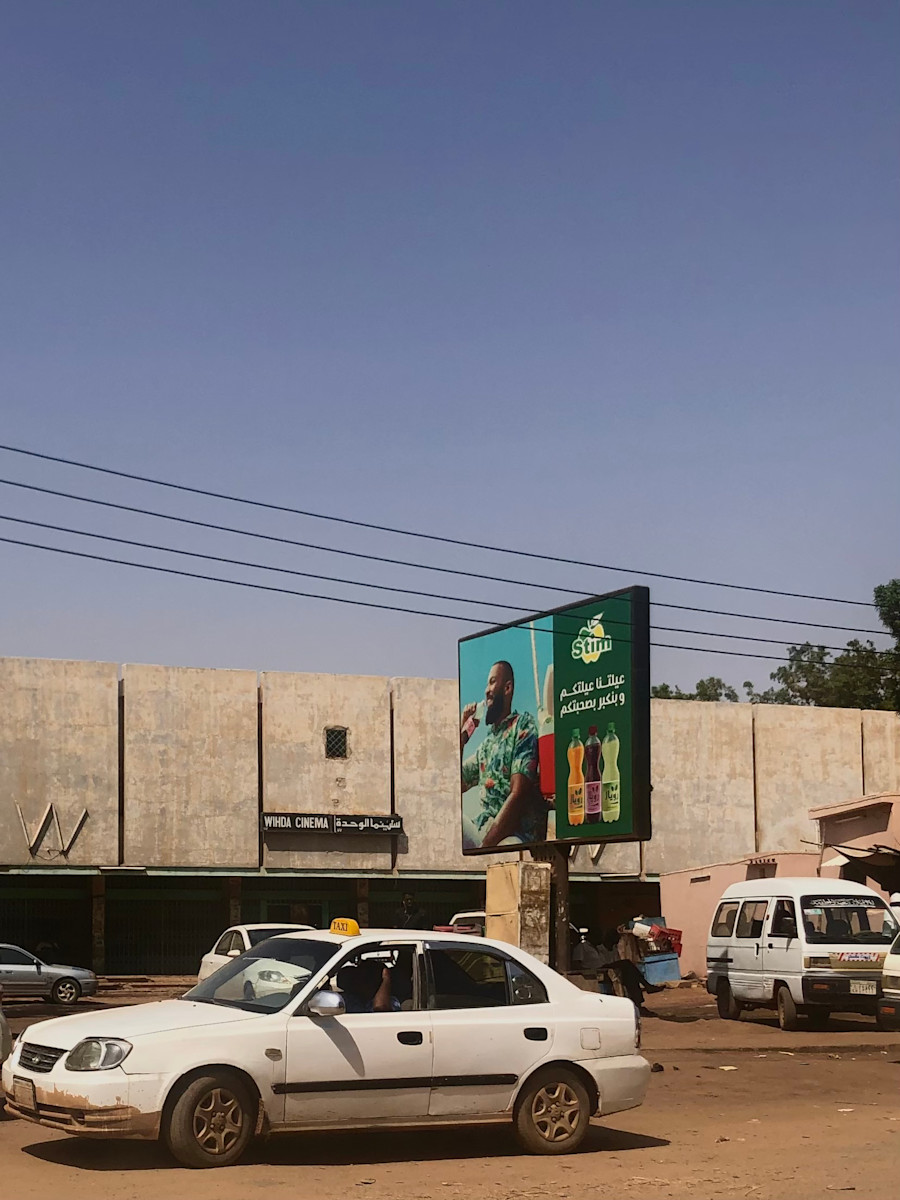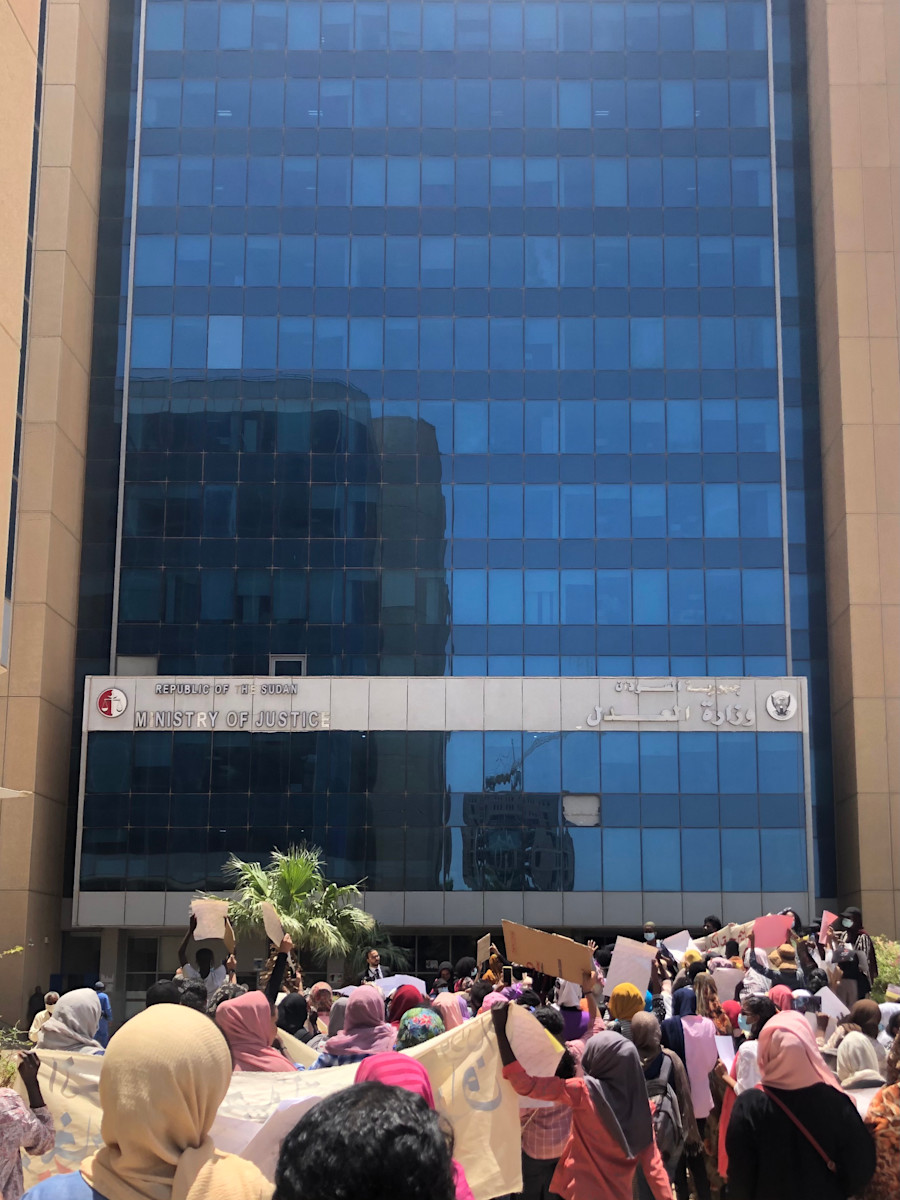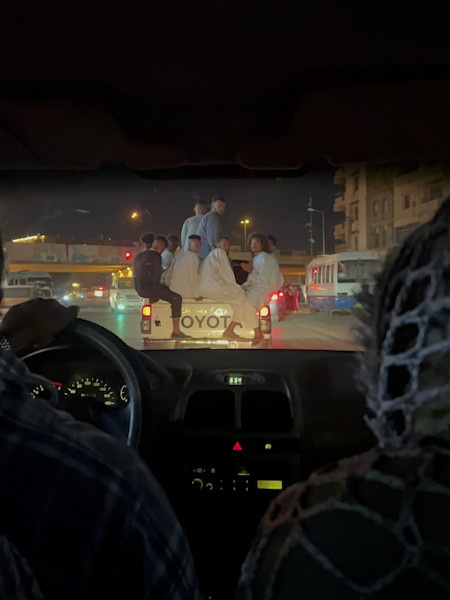Omar al-Bashir’s thirty-year regime was oppressive, corrupt, and deeply unjust, among many things. What is noted a lot less frequently is the fact that it was also boring.
Culture and community were under constant attack. Under congregation bans and a strictly enforced fundamentalist code of law, social gatherings in Khartoum were always at risk of raids. Women and those with marginalized identities were particularly targeted by these raids, many of whom faced lashings and years in prison for crimes that were easily justified through the vaguely defined “public order” law.
The regime also cut all funding for sports, arts, and entertainment. Cinemas and theaters were either repurposed or remained abandoned for decades. They closed community clubs for being risky congregation points. Even university campuses would close early to avoid being a venue for sin, crime, or political gatherings. The wealthy elite met in private international clubs, embassies, and residential compounds. For the rest of Khartoum, there was very little to do.
This persistent boredom (combined with Sudan’s cheap data plans, relative to elsewhere in Africa) fostered a rich virtual community for those in the capital in the early 2010s. University and high school students took to the internet to connect with their peers after hours. Social relationships flourished online for those in both Khartoum other states. Relationships also flourished with Sudanis abroad who historically were difficult to reach due to the expensive price of landline calls and mail (which has little to no infrastructure in Sudan).
The internet became a place where the laws of the land could not touch us. Al-Bashir’s regime was insistently old school. They rejected technological advancement due to beliefs that it would bring debauchery. This was perhaps a veil to mask their reluctance to invest money into updating curriculums and infrastructure. My first passport—issued in the early 2000s—had my details handwritten. Well into the 2000s, civil services still operated entirely through paper filing systems. This meant that until the early 2010s, we could rest assured that the notoriously antiquated regime would not have the means to detect—let alone surveil—what we did online. At first, the internet existed for entertainment purposes. But soon, the collectivist nature of our society translated into the way we used social media. Eventually, the internet would play a major role in al-Bashir’s ouster at the hands of Sudanis younger than his regime.
Munbarshat
On Munbarshat, the most notable of Facebook groups, young women in Sudan would post the names or photographs of potential husbands to gather intel about the kind of people they were. Peer-reviewing men in this way is an ancient tradition among Sudani women; it is one of the many ways we keep each other safe. In the villages, this would happen organically because everyone knew each other and women had chances to gather more often. But Khartoum was different, and problems faced by women who were navigating a new social landscape required change and innovation. Despite the city being less tight knit than the villages, this group made it easy to expose a man’s history—philandering, a secret wife, or even shady business practices.
People of many marginalized identities found solace in online communities in this way. On the internet, they could exist under aliases, be faceless, and still connect with others who understood their struggle. This existed in direct contrast to the physical and material surveillance we had all known growing up under al-Bashir’s regime, where anything you said out loud could be heard by plainclothes intelligence agents and held against you.
Geographies of Control
Khartoum’s social structure was largely shaped by the hierarchy through which the Anglo-Egyptian colonial presence interacted with different ethnic groups in Sudan. In the colonial era, groups that had more proximity to Arabness were deemed more palatable and therefore given disproportionate opportunities for development in exchange for their support in pillaging the nation. This created an elite of Arab Sudanese people in the capital. They were typically Sunni Muslims from tribes in northern Sudan and spoke Arabic. They formed the majority in the capital, had almost exclusive access to post-secondary education, and held the most power in both governmental and nonagricultural trades.
Non-Arab Sudanese people from the western and southern regions of Sudan, as well as South Sudanese people, experienced extreme discrimination in the capital, which included anti-Blackness, suppression of religious freedom, and increased structural barriers to escaping poverty. State violence against non-Arab Sudanese people also extended beyond the capital; the Sudanese Armed Forces (SAF) and state-funded armed groups (including the Janjaweed militia, which grew to form the Rapid Support Forces, or RSF), committed mass killings, assaults, and arsons in the pursuit of land, gold, and other natural resources.

Under al-Bashir’s regime, the government fully controlled traditional media (television, radio, and newspapers), and news of the regime’s atrocities were deliberately withheld from people in the capital. Instead, racist and tribalist propaganda spread through state-owned channels, attempting to frame the “conflicts” in those regions as necessary efforts graciously performed by the noble Sudanese army to protect the (majority-Arab) citizens in the capital. This propaganda was largely successful because of the racism ingrained among the Khartoum elite. Those who opposed it had to search deliberately for access to legitimate truth(s)—let alone finding others to believe the truth once they’d found it.
Yet when social media use increased, firsthand experiences from those areas became accessible to people across the country. Through pictures of burning villages and statements from women and children who had been assaulted, the reality of the “conflicts”—and the role that the Sudanese army played in them—were uncovered. Outrage grew in the capital among youth who were deeply dismayed at the state violence inflicted on innocent civilians. As such, protests, resistance groups, and secret solidarity discussions formed across states, even if it was at an incredibly small scale due to the regime’s continued terror and censorship.
While many Sudanese people did not have access to the internet and smartphones, the internet still brought some Sudanese people of varying identities together in an unprecedented way. Consequently, unprecedented discussions about their shared struggle became possible. Initially, this online space merely provided solace, but soon a collective rage formed that could (and would) sustain a national movement.
Taking Initiative Online
State officials insidiously embezzled funds and drained government resources to either build personal wealth overseas or sponsor ethnic cleansing in the western regions of Sudan. With funds being drained, public services failed catastrophically in the capital. Youth who were already connected online mobilized their networks to address the most urgent of these failures.
One such initiative was Nafeer (named after a traditional Sudanese Arabic term meaning “to come together hurriedly for a public cause”), through which young people gathered to prepare vulnerable areas for high tide and heavy rain seasons and support those who had already fallen victim to extreme weather conditions. The initiative thrived via the internet, where they were able to rally volunteers and gather donations from Sudanese people abroad and locally.
Another initiative, Shari’ al-Hawadith, leveraged social media to gather volunteers and donations to support people who needed critical medical care or blood transfusions. It began in 2012 at a children’s hospital, then replicated and extended across the capital and across Sudanese states, sustained by the enthusiasm of young people looking to support their local communities.
On a smaller scale, neighborhood youth came together through WhatsApp groups to make plans to collect domestic waste, create community gardens, and pool resources for neighborhood mutual aid. This could range from funds for school fees to community intervention in situations of domestic and social issues. In addition to neighborhood committees, unions—which had a rich history in Khartoum—came together online and in the workplace to lobby for better working conditions. Everyone from bank employees to street vendors had a union and would turn to it in the face of injustice.
By the late 2010s, through neighborhood committees, unions, and national initiatives, the youth effectively and autonomously played the role of a government in the provision of public services and community support. Online forums made political education accessible—not in theory but in praxis—through the analysis of economic and social realities that existed as a result of the state’s negligent policies. Without government intervention, young people had room to discuss possible alternatives for organizing their communities, whether theoretically or through examples in history or alternate geographies.
With a mean age of nineteen, most of the Sudanese population had grown up under al-Bashir’s rule and had never witnessed an alternative to the regime. The internet showed many young people—often for the first time—new ways of existing. What had been normalized under the rule of a government that made no effort toward public safety, infrastructure, education, or development became atrocious in the light of comparison to the stories of Sudanese people abroad and those from non-Sudanese cultures.
A Turning Point
By 2018, young people in Sudan had powerful networks and a deep collective rage. The government had repeatedly proven itself useless, dampening all efforts made by well-meaning citizens to save each other in a perpetually failing economy. The final straw came in December 2018, when the government announced that bread prices would triple. Following the announcement, students in the city of Atbara took to the streets and burned the national party headquarters.
After hearing about this through their established channels of communication, their peers in Khartoum, Port Sudan, and Dongola followed suit. The government attempted to suppress these protests in the same violent ways they have historically, but a new type of resilience was now possible. After each protest was dispersed, neighborhood committees and unions would instruct their members on more strike dates and even larger demonstrations.
Detecting this, the government imposed internet blackouts and doubled down on propaganda shared on state-controlled mediums. This formed a hindrance, but soon the youth found alternate ways to communicate: through graffiti on the walls, door-to-door mobilizing, and papers given out at prayers. Additionally, blackouts were only ever a temporary hindrance; they inevitably had to be lifted due to the economic impact they had on telecom companies.
As the December 2018 protests crystallized into a revolution in 2019, social media played a crucial role in organizing and communication. Neighborhood committees named meeting points for rallies in their WhatsApp groups. In those rallies and demonstrations, safe routes were called out on what was then Twitter (since renamed X). Twitter users identified search points so that protestors knew to avoid them. Posts with names and locations of arrested protesters called for legal help and kept families informed. Users also posted locations where doctors and blood donations were needed and citizens responded to these calls promptly. News and pictures on the ground communicated the volume of the protests and circulated widely online, motivating those in different states to keep going and sparking hope that a return would be possible for those abroad who had been exiled by the regime.
The Munbarshat group was repurposed to identify those who were brutalizing protesters or gathering intelligence in plain clothes. Pictures of them were posted, and within minutes their names and addresses were found and shared with people in their neighborhood so that they could protect themselves against potential informants. This was one of the many community efforts made in response to counterinsurgency, which existed in multilayered ways that extend beyond this piece but also provide crucial context for it.
A Youth Revolution
In April 2019, a sit-in of 2 million people formed at the military headquarters in Khartoum. Days after the sit-in began, al-Bashir was deposed through the sustained protests, and all political prisoners were released. At the news of such a huge victory, revolutionaries from other states decided it was time to close the distance. Online communication was not enough anymore, and thousands of people arrived in buses and trains from neighboring states to join the sit-in. People recorded and shared moments of triumph online, as young people who had never met ran into each other’s embrace, united by their relentless pursuit for freedom, justice, and peace.
The sit-in became a physical embodiment of the safe spaces we had only imagined could exist online. We congregated freely and spoke without bounds. We cared for each other in immediate ways. We’d spent years learning how to do it in fragments, in the absence of government services. Now, each of the fragments had come together to form a microcosm of a society where resources were redistributed, safety was a community effort, and no one restricted another’s freedom.

The sit-in was violently dispersed on June 3, 2019, and all parties who had the power to command armed groups denied that the violence ever took place. The only source of truth was documented by the revolutionaries present at the time and shared on social media, as authorities gaslit the youth and dismissed allegations. On the heels of the June 3 massacre, unions called for complete civil disobedience. Disobedience began the day following the massacre and continued for much of June.
In July, a temporary agreement was announced, where civilian and military factions conceded to sharing power ahead of elections scheduled for 2023. The SAF, the RSF, and Prime Minister Hamdok formed a sovereign council headed by a cabinet of civilian ministers. This was not well received by revolutionaries who had been firsthand victims of the SAF as well as those from regions terrorized by the RSF before they attempted to rebrand away from their bloody past as Janjaweed.
Post-revolution Organizing
In the years that followed, the Sudanese people continued to organize towards a fully civilian government which represented them and their interests. The intention of the streets hadn’t changed, but the tools at our disposal had and so did the enemies we were up against.
Al-Bashir’s ouster left a vacuum that many fought for a chance to fill. The RSF—a paramilitary force that had rebelled from the SAF—wielded technology in a way that no previous armed group in Sudan had. With support from various international powers with experience leveraging surveillance technology, the RSF employed bots to surveil and disrupt digital newsfeeds that had previously been reliable, safe spaces for civilians to share and receive information.
"The sit-in became a physical embodiment of the safe spaces we had only imagined could exist online. We congregated freely and spoke without bounds. We cared for each other in immediate ways."
The RSF used these channels to spread misinformation and sway public opinion to favor themselves and, perhaps more importantly, to forget the atrocities they had committed when they were known as the Janjaweed. This served an immediate purpose: to garner support for a 2023 election win and persuade Sudanese revolutionaries to consider a joint military-civilian rule. They leveraged recency bias by circulating images of the free transport and community support they’d offered—a thinly veiled attempt to erase their crimes. This also served a strategic secondary purpose: to sabotage social media feeds that held the most comprehensive archives of the atrocities they had committed before their rebrand.
Despite these attempts, most citizens remained steadfast in their desire to have a fully civilian government—that is, where executive, administrative, and legislative branches of the government are led by civilians and the military holds no decision-making power. Government follow-through lagged, economic issues persisted, and thus protests continued, calling for civilian-led democracy.
When public relations failed, the RSF and SAF returned to old tactics and used brute force, aligning to form a coup against Prime Minister Hamdok in October 2021, reinstating him on their terms shortly after, and pushing him to resign in January 2022. Fifteen months later, tensions between the two groups escalated into a full-blown war that continues to displace and harm millions of innocent Sudanese people today.
Throughout the war, both sides have spread misinformation and disrupted digital newsfeeds. Both factions fabricate social media narratives that portray them as innocent and noble within the historical archive and in the eyes of the international community. The RSF is leading in this aspect due to strong grasp of technology, while the SAF attempts to catch up. This makes it harder for people to supply information to each other, which is needed more crucially than ever before.
The Role of Platform Automation
In addition to the active sabotage of online safe spaces by the RSF and the SAF, the platforms themselves are changing. Personalization algorithms on Twitter and Instagram removed the ability to see chronological content from people that you follow. This is catastrophic in situations where information being shared is time-sensitive, such as safe exit routes, calls for urgent blood donations, or mutual aid. It also makes organizing on social media incredibly difficult and less effective.
Personalization algorithms have also created echo-chambers, rarely permitting opposing opinions or information from lesser-known regions to break through onto timelines of people who have not already engaged with something similar. Considering how critical social media use has been for Sudanese people to organize in the past, platform automation makes it incredibly difficult for us to garner international attention proportionate to the atrocious conditions in Sudan. Conversely, those who do engage are flooded with seemingly endless content streams about the war, causing either fatigue or complete desensitization.
Bots that detect and automatically respond to keywords such as “fundraiser” or “donations” pester those trying to support war victims in need of help. Algorithms that detect these keywords “shadow-ban” them, presumably because they deem them not engaging enough for their audiences. Biases against what is considered controversial and/or hate speech—such as callouts of powers that are funding the war—are amplified by automation and result in censoring people who are simply sharing their lived experiences with others.

Social media has become a marketplace where attention is a currency, which makes it difficult to use as a tool to meaningfully interact with others. As with any marketplace, it has tilted further toward the interests of capitalists who have the power to rename or even erase any platform from the web on a whim. For many people, this is a loss of an entertainment platform. For Sudanese people and other communities who are fighting similar fights, this would be the destruction of historical archives, loss of evidence of war crimes, and the annihilation of networks that have sustained connection for over a decade.
